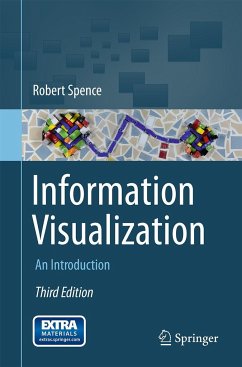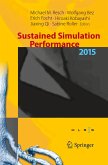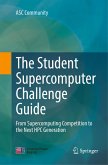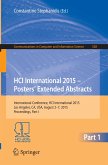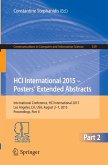Information visualization is the act of gaining insight into data, and is carried out by virtually everyone. It is usually facilitated by turning data - often a collection of numbers - into images that allow much easier comprehension.Everyone benefits from information visualization, whether internet shopping, investigating fraud or indulging an interest in art. So no assumptions are made about specialist background knowledge in, for example, computer science, mathematics, programming or human cognition. Indeed, the book is directed at two main audiences. One comprises first year students of any discipline. The other comprises graduates - again of any discipline - who are taking a one- or two-year course of training to be visual and interaction designers.By focusing on the activity of design the pedagogical approach adopted by the book is based on the view that the best way to learn about the subject is to do it, to be creative: not to prepare for the ubiquitous examination paper.The content of the book, and the associated exercises, are typically used to support five creative design exercises, the final one being a group project mirroring the activity of a consultancy undertaking a design (not an implementation) for a client. Engagement with the material of this book can have a variety of outcomes. The composer of a school newsletter and the applicant for a multi-million investment should both be able to convey their message more effectively, and the curator of an exhibition will have new presentational techniques on their palette. For those students training to be visual/interaction designers the exercises have led to original and stimulating outcomes.
"The book itself is a very good introduction to information visualization, and as such, it can serve for an introductory course allowing various pedagogical paths for an instructor to take. ... it is a very readable book to be recommended not only to prospective students of information visualization, but to anyone interested in the topic, since it is written in such a way that there are no prerequisites to be able to read it." (P. Navrat, Computing Reviews, July, 2015)
"The title is accurate. There is a minor genre of books on this topic within statistics. This book differs in focusing on a broader range of data types. It also gives more attention to psychological and cognitive issues. ... Professionals working primarily on interface design for a broad audience, say map or web page designers, may find the text useful as it discusses many issues other books on visualization ignore." (Robert W. Hayden, MAA Reviews, June, 2015)
"The title is accurate. There is a minor genre of books on this topic within statistics. This book differs in focusing on a broader range of data types. It also gives more attention to psychological and cognitive issues. ... Professionals working primarily on interface design for a broad audience, say map or web page designers, may find the text useful as it discusses many issues other books on visualization ignore." (Robert W. Hayden, MAA Reviews, June, 2015)

